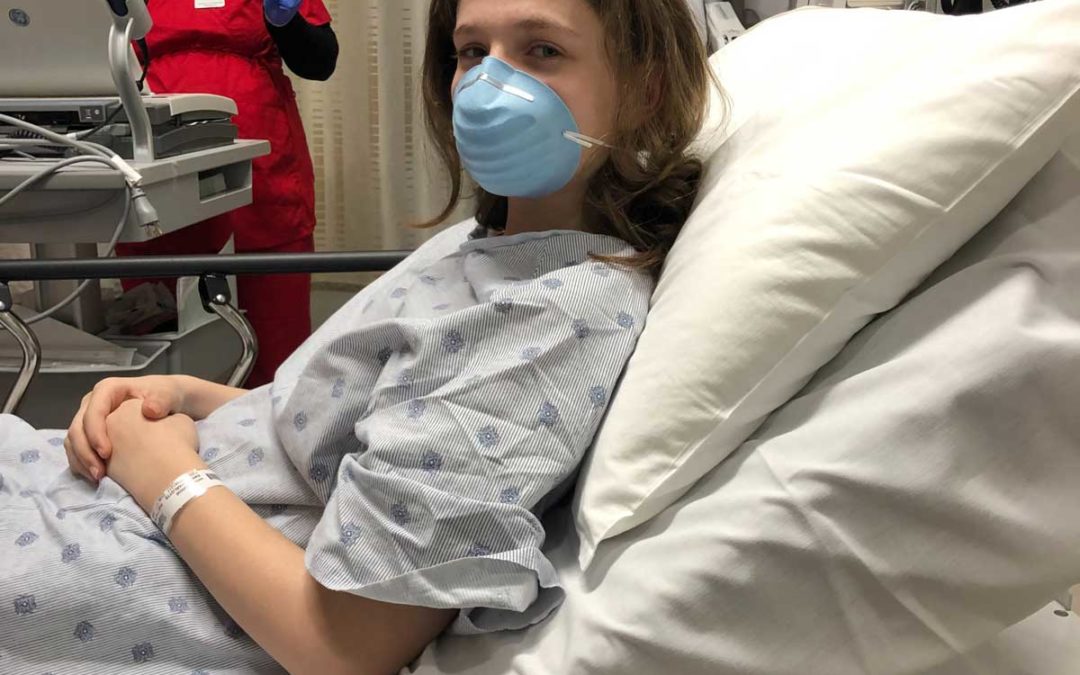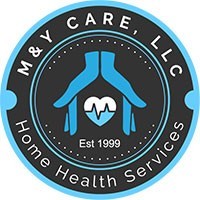
by M | Mar 17, 2020 | News |
Across the country, state and federal officials are trying to solve one crucial problem: how to increase hospital capacity as the number of acute COVID-19 cases increases.
Some — including New York Governor Andrew Cuomo — have recently called for the retrofitting of existing non-medical buildings. Others have suggested turning low-occupancy skilled nursing facilities into makeshift hospitals.
Nationally, there are slightly more than 924,000 hospital beds and about 98,000 intensive care beds, according to a 2018 American Hospital Association survey.
While they’re not being touted publicly at the moment, hospital-at-home programs can also help boost capacity during the coronavirus pandemic, especially in areas where proven models already exist. Broadly, hospital-at-home programs provide a range of hospital-level services inside a patient’s home, often with better outcomes and lower costs than traditional stays.
“I think hospital at home definitely has something to offer where it can be implemented,” Dr. Bruce Leff, the director of the Center for Transformative Geriatric Research at Johns Hopkins University School of Medicine, told Home Health Care News.
Leff — a long-time proponent of the concept — has been exploring hospital at home since the early 1990s. Today, several well-known models exist, including Mount Sinai’s hospital-at-home program, launched in 2014.
Nashville, Tennessee-based Contessa Health has built its entire business strategy around delivering hospital-level care inside the home. In addition to Mount Sinai, the company has helped build programs at Marshfield Clinic Health System, Prisma Health and elsewhere.
Some researchers estimate as many as 38 million Americans could need medical care for COVID-19, including as many as 9.6 million who will need to be hospitalized. A USA TODAY analysis found that — if the U.S. sees a major spike in coronavirus cases — there could be almost six seriously ill patients for every existing hospital bed.
“It depends on where you are, as different parts of the country are a little bit ahead or a little bit behind in terms of the curve on number of cases,” Leff said. “I think you’re going to see a flow that moves across different cities, hitting places at different times. On some level, that’s good because everyone can start to learn a bit more from everyone else’s experience.”
Hospital-at-home models can help the COVID-19-induced capacity crunch in at least two key ways.
The first is by taking some non-coronavirus patients out of the hospital and moving them into the home for treatment. Theoretically, that could include patients who are stable and nearing the end of their hospital stay, but still require services like intravenous antibiotics.
It could also mean discharging some patients directly from the emergency department when appropriate.
“One major use case is decanting the acute hospital,” Leff said. “If you can do that for people who don’t need ICU beds or for people who don’t need respirators, you can create a fair bit of capacity.”
Leff estimated that 20% to 40% of people currently receiving care in the hospital could be treated more quickly, in turn creating added capacity.
The second key way hospital-at-home models can help during the ongoing public health crisis is by specifically targeting COVID-19 patients and keeping track of their health status over time.
“I was just on the phone yesterday with folks out on the West Coast [setting up] a COVID-specific model to take people who are at risk or who test positive for COVID, but who are not yet very ill,” Leff said. “You can take them back to their homes, implement some sort of tele-video capability and check on them [regularly].”
If conditions appear to be worsening, individuals can then be brought back into the hospital.
“You don’t have to take up precious space,” Leff said. “There are people who are COVID-positive or at risk of needing higher levels of care, but who haven’t quite gotten there yet. We can bring them into the system when it’s most appropriate and rationalize the use of beds.”
As of Monday afternoon, at least 3,927 people in 49 states — plus Washington, D.C., and three U.S. territories — have tested positive for the coronavirus, according to the New York Times. At least 68 patients with the virus have died.
Although the circumstances are tragic, the COVID-19 pandemic may strengthen the U.S. health care system down the road, shining a brighter light on hospital at home and similarly innovative care delivery models.
Currently, fee-for-service Medicare does not cover hospital-at-home services.
The cost of in-patient admissions for COVID-19 treatment could top $20,000, a new issues brief from the Peterson Center on Healthcare and Kaiser Family Foundation projects.
“In times of crisis, things that people wouldn’t normally think about or things they would think about sort of on a slow-burn basis start to get some traction,” Leff said. “Crises have a way of making things happen.”
Written By Robert Holly | March 16, 2020
Source: Home Health Care News

by M | Mar 12, 2020 | News |
Recognizing that patients prioritize convenient and inexpensive care, Duffy and Lee recently asked whether in-person visits should become the second, third, or even last option for meeting patient needs. Previous work has specifically described the potential for using telemedicine in disasters and public health emergencies. No telemedicine program can be created overnight, but U.S. health systems that have already implemented telemedical innovations can leverage them for the response to Covid-19.
A central strategy for health care surge control is “forward triage” — the sorting of patients before they arrive in the emergency department (ED). Direct-to-consumer (or on-demand) telemedicine, a 21st-century approach to forward triage that allows patients to be efficiently screened, is both patient-centered and conducive to self-quarantine, and it protects patients, clinicians, and the community from exposure. It can allow physicians and patients to communicate 24/7, using smartphones or webcam-enabled computers. Respiratory symptoms — which may be early signs of Covid-19 — are among the conditions most commonly evaluated with this approach. Health care providers can easily obtain detailed travel and exposure histories. Automated screening algorithms can be built into the intake process, and local epidemiologic information can be used to standardize screening and practice patterns across providers.
More than 50 U.S. health systems already have such programs. Jefferson Health, Mount Sinai, Kaiser Permanente, Cleveland Clinic, and Providence, for example, all leverage telehealth technology to allow clinicians to see patients who are at home. Systems lacking such programs can outsource similar services to physicians and support staff provided by Teladoc Health or American Well. At present, the major barrier to large-scale telemedical screening for SARS-CoV-2, the novel coronavirus causing Covid-19, is coordination of testing. As the availability of testing sites expands, local systems that can test appropriate patients while minimizing exposure — using dedicated office space, tents, or in-car testing — will need to be developed and integrated into telemedicine workflows.
Rather than expect all outpatient practices to keep up with rapidly evolving recommendations regarding Covid-19, health systems have developed automated logic flows (bots) that refer moderate-to-high-risk patients to nurse triage lines but are also permitting patients to schedule video visits with established or on-demand providers, to avoid travel to in-person care sites. Jefferson Health’s telemedical systems have been successfully deployed to evaluate and treat patients without referring them to in-person care. When testing is needed, this approach requires centralized coordination with practice personnel as well as federal and local testing agencies. It is critical that practices not routinely refer patients to EDs, urgent care centers, or offices, which risks exposure of other patients and health care providers.
Patients presenting for in-person care who screen positive for high-risk features should be isolated immediately to avert further contact with patients and health care workers. Before the Covid-19 outbreak, many EDs modified the “provider-in-triage model” (rapid initial evaluation and testing) by allowing a remote provider to perform intake. Aurora Health, for example, partnered with a commercial telemedicine vendor, and others have developed their own software for this purpose. In an emergency situation, web-conferencing software with a secure open line from a triage room to a clinician can be implemented relatively rapidly. Covering multiple sites with a single remote clinician can address some workforce challenges, but it is difficult to do if your software lacks a queuing function.
Tablet computers can be cleaned between patients using well-defined infection-control procedures. In ambulatory care settings, patients screening positive at presentation can be given a tablet and isolated in an exam room. A telehealth visit can be conducted without exposing staff by using commercial systems or paired tablets allowing communication with a clinician through a dedicated connection. Because of supply-chain challenges, we rapidly repurposed and deployed tablets we already had. We expect that Covid-19 testing will be more widely available shortly, but initially patients who were well enough to be sent home were quarantined there while home-based testing was coordinated. This system works for patients who are well but cannot totally eliminate health care workers’ exposure to sick patients who require procedures. Similar televisit systems are also being used for hospitalized patients to reduce exposure risks for visitors and staff.
Electronic intensive care unit (e-ICU) monitoring programs, which allow nurses and physicians to remotely monitor the status of 60 to 100 patients in ICUs in multiple hospitals — such as services offered by Mercy Virtual Care Center, Sutter Health, and Sentara Healthcare — are ideal for monitoring sicker patients. Technological and staffing complexities make it impossible to create such a program on short notice, but rapid deployment of the two-tablet approach can reduce health care workers’ contact with infected patients in the ICU.
Community paramedicine or mobile integrated health care programs allow patients to be treated in their homes, with higher-level medical support provided virtually. Houston’s Project ETHAN (Emergency Telehealth and Navigation) has used telemedical oversight by physicians to augment care offered in person by 911 responders, reducing the need for transportation to the ED. In the face of Covid-19, Avera Health is preparing to send mobile home health care units directly to patients and is coordinating home-based testing. For sicker patients at home, such programs can facilitate evaluation before hospital transfer, potentially allowing them to bypass the ED and be placed directly in a hospital bed, reducing exposure for health care workers and other patients.
Much medical decision making is cognitive, and telemedicine can provide rapid access to subspecialists who aren’t immediately available in person. This approach has been explored most fully in the context of stroke, for which systems such as Jefferson Health, Cleveland Clinic, and the University of Pittsburgh provide virtual emergency neurologic care at large numbers of hospitals. The Mount Sinai system leverages specialists at eight hospitals and more than 300 sites to provide virtual emergency consultations and distribute work among subspecialty providers. The barriers to implementing these programs are largely related to payment, credentialing, and staffing of specialists.
Reports that as many as 100 health care workers at a single institution have to be quarantined at home because of exposure to Covid-19 have raised concern about workforce capacity. At institutions with ED tele-intake or direct-to-consumer care, quarantined physicians can cover those services, freeing up other physicians to perform in-person care. Office-based practices can also employ quarantined physicians to care for patients remotely. The challenge is that other health professionals (nurses, medical assistants, physician assistants) also contribute to in-person care, and telemedicine cannot replace them all.
To prepare for the worst-case scenario — a local pandemic that leaves health care workers quarantined, sick, or absent — Jefferson Health is deploying telehealth so that clinicians can continue to care for established (nonexposed) patients by converting scheduled office visits to telemedicine visits. These visits can be conducted with both patient and clinician at home, greatly limiting travel and exposure and permitting uninterrupted care of established patients. Online training modules and remote training sessions are available for clinicians or patients who require just-in-time training or assistance during their first call.
The main barriers to maintaining usual care by telemedicine require changes that are unlikely to come from the federal level. Commercial reimbursement, Medicaid reimbursement, and credentialing are the states’ domain. Only 20% of states require payment parity between telemedicine and in-person services. Fortunately, both the Centers for Medicare and Medicaid Services and some local commercial payers have modified payment policy in response to Covid-19. We hope others will follow suit.
Disasters and pandemics pose unique challenges to health care delivery. Though telehealth will not solve them all, it’s well suited for scenarios in which infrastructure remains intact and clinicians are available to see patients. Payment and regulatory structures, state licensing, credentialing across hospitals, and program implementation all take time to work through, but health systems that have already invested in telemedicine are well positioned to ensure that patients with Covid-19 receive the care they need. In this instance, it may be a virtually perfect solution.
— Judd E. Hollander, M.D., and Brendan G. Carr, M.D.
This article was published on March 11, 2020, at NEJM.org.

by M | Mar 10, 2020 | News |
On Thursday, the Senate approved a bill that will provide $8.3 billion in emergency funds to help mitigate the effects of COVID-19, otherwise known as the coronavirus. Apart from funding, the bill made major changes to telehealth statutes, possibly allowing home-based care providers to both rely heavier on telehealth tools and be properly reimbursed for those services.
Specifically, Congress is allowing the U.S. Department of Health and Human Services (HHS) to waive certain originating-site constraints, such as the ones that restrict telehealth in nonrural settings. Providers will also be allowed to conduct telehealth instruction over telephones with audio and video capabilities.
“Because all of the United States is currently under this public health emergency designation, any Medicare beneficiary would now be eligible for care from a provider via a two-way audio-video mechanism, including a smartphone,” legal experts from Alston & Bird wrote in an advisory note. “This applies anywhere in the U.S. for any Medicare-reimbursable telehealth service — not just for treatment of the coronavirus.”
Since the coronavirus began spreading throughout the United States, many home health industry insiders have pushed for greater use of telehealth technology.
Among them is Raj Kaushal, the founder of Senior Healthways Inc. and a former president at LHC Group Inc. (Nasdaq: LHCG).
“We have to look at delivery of care in the case of an outbreak — and how we can shift it,” Kaushal told Home Health Care News. “Can we utilize a triage system? Can we use telehealth? If we’re an agency that doesn’t have telehealth, can we use telephone and text monitoring systems? Video conferencing? We need to find ways to make sure exposure to the patient and the staff is minimal, if it comes to that.”
Despite opening some new doors, there are still certain limitations to the newly relaxed telehealth requirements. Also, for providers that do use smartphones to connect with patients, existing HIPAA standards will still apply.
So far, the coronavirus has impacted more than 108,000 people around the world. As of Monday afternoon, the number of confirmed cases in the United States was approaching 600.
For providers that have not acquainted themselves with telehealth prior to the coronavirus outbreak, Synzi, a telehealth and telemedicine technology company, is currently offering free basic and temporary services. Synzi has over 50 clients in home-based care.
“We’re offering up our service to non-current customers, because we believe that this outbreak is pretty widespread,” Synzi CEO Lee Horner told HHCN. “And ultimately, we want to make sure that home health organizations have access to technology like ours that allows them to provide guidance to their patient population in the situations that we’re in today. That’s kind of first and foremost.”
Telehealth becoming vital
Telehealth has long been considered a big part of the future for health care providers. As providers’ fears worsen, that future could come sooner by necessity.
The Society for Post-Acute and Long-Term Care Medicine — formerly known as The American Medical Directors Association (AMDA) — represents a community of over 50,000 medical directors, physicians, nurse practitioners, physician assistants and other practitioners working in long-term care settings. Its incoming board president, Dr. David Nace, told HHCN last week that telehealth would play a large role in containing the virus in long-term care settings.
“I think it has to have a very strong role. Even in the nursing home setting, even in the assisted-living setting, you want to minimize the number of individuals that come in contact with an infected individual,” Nace said. “One of the things that can be quite helpful is the use of telemonitoring and telehealth equipment … . I think that is very appealing in the long-term care setting, and it’s been one of the things that we’ve been thinking a lot about.”
Telehealth tools have their limitations, and they won’t ever be able to replace in-person provider care completely.
But having the ability to access patients virtually will allow providers to avoid person-to-person contact unless it’s absolutely necessary.
“I absolutely do believe that [this will speed up the shift to telehealth]. I’m pretty confident, both from the home health organization [perspective] and the potential of CMS opening up different reimbursement models to support this,” Horner said. “I don’t think there’s going to be a choice here.”
There’s already been examples in areas with a large number of cases — such as Seattle — of both patients and nurses refusing to meet with each other in person.
Synzi has already seen a major uptick in the amount of time its clients are spending using its platform. Usage is up 25% across all modalities over the past two weeks, and it expects a greater rise moving forward as patients or nurses refuse to meet with each other in person.
Opening doors
Previously, roadblocks for reimbursement prevented providers from committing more to telehealth. Medicare historically has only reimbursed providers for telehealth under special circumstances.
While policymakers will likely still need to work out details, last week’s language will open more opportunities for providers to be reimbursed for other services in different settings.
In a 2019 study of 159 home health agencies conducted by Definitive Healthcare, roughly 28% of respondents said they had a goal of establishing new telehealth services within the next year or so.
Definitive Healthcare is a Framingham, Massachusetts-based provider of health care data and analytics. Of the 159 participants, roughly 70% were agency-level providers and 30% corporation-type businesses.
In addition to Synzi, other examples of telehealth providers in the home health space include Hoboken, New Jersey-based Health Recovery Solutions and Wixom, Michigan-based HNC Virtual Solutions.
Concierge Home Care, a home health provider and Synzi client with six locations in Florida, began using technology to connect with patients virtually because of the prevalence of hurricanes in the state.
That has given the agency confidence while bracing for the spread of coronavirus, COO Linda Murphy told HHCN.
“If you think about the old days when we had a hurricane come through, you’d have everybody on the phone calling patients as well as staff hitting the road to try to talk to patients and get them prepared,” Murphy said. “With technology today, you can be so much more efficient and provide even more detailed information because you can standardize messaging across the whole arena or make it very specialized depending on the type of patient that you’re dealing with.”
Even before last week’s changes to the telehealth reimbursement process, there were perks to using virtual care as a cost-saving tool. That’s especially true under the Patient-Driven Groupings Model (PDGM), which has more agencies strapped for cash.
“[Telehealth] certainly adds an element of non-reimbursable costs, but it also saves on that visit and it still gives us the potential to achieve the quality outcome that we are looking for,” Sharon Harder, president of C3 Advisors, told HHCN in February. “As we think of home health, generally, all of these innovations are going to help us with our margins when it comes to PDGM.”
[Take HHCN’s Survey: Analyzing Home-Based Care Industry Impact of Coronavirus]
Written By Andrew Donlan | March 9, 2020
Source: Home Health Care News

by M | Mar 8, 2020 | Blog |
It can be tricky to know what types of and just how much caregiving may be required for your loved one. The best way to ensure the highest level of quality care and to understand costs is to meet with an M&Y Care specialist to discuss your situation. This meeting will provide a detailed review of the care needed, a schedule for providing that care, and offer an opportunity for family members to get answers to any questions. Here is an example of typical discussion topics covered in this meeting:
- Specific physical needs of the care recipient with regards to bathing and grooming, dressing, meals and diet, mobility, and incontinence
- Reviewing schedules involving sleep, eating and medication
- Emotional needs such as social interaction, activities, conversation, and companionship
- What assistance is required with homemaking such as preparation of meals, groceries, linens, laundry, and light housekeeping
- Access to the home, documentation, and how to work with scheduling changes
- Cost and insurance coverage
Once you choose to proceed, our care specialist will create a complete plan that will also include input from your physician or medical team, which will outline how effective and affordable care can be achieved for your loved one.
Let’s talk!
Have a great Sunday!

by M | Mar 3, 2020 | News |
Q: Can a home health aide make it possible for an elderly person stay in his or her home despite having health challenges?
A: Many adult children are turning to home health care agencies when elderly parents need skilled nursing, help with daily activities or just companionship.
The aging-at-home trend is moving toward taking care of people in their homes, instead of moving them to facilities, which can sometimes cost more, said Lisa Zidek, president of Visiting Nurse Association of Ohio, a nonprofit that provides home health aides and skilled nurses for home care.
“Home care in general is considered a less-expensive care model in the continuum,” Zidek said.
About 12,000 home care agencies provided care to 3.4 million Medicare beneficiaries in 2017, the most recent year for which data is available, according to a Washington Post article. The number of home health aides is projected to grow 36% between 2018 to 2028, much faster than the average for all occupations, according to the Bureau of Labor Statistics.
Skilled nurses and personal care aides provide different kinds of assistance.
Home health skilled nursing services are typically paid for through insurance and are ordered by a physician, according to Visiting Nurse Association of Ohio. Nurses perform tasks such as managing medication and wound care, physical therapy and other skilled nursing needs for a limited amount of time. This type of assistance is typically ordered by a physician who writes an order for home health when a patient is returning home after a stay in a hospital or skilled care facility.
There are other options for home care, including private duty care, where the client usually pays out-of-pocket costs. A private duty home health aide, also called a personal care aide, provides non-medical care such help with bathing, eating, dressing, running errands or light household chores, according to Visiting Nurse Association of Ohio. The family decides how long the aide stays each day, and the relationship can go on for years. Private duty nursing is also available for chronic conditions or conditions that may not be covered by a physician order.
Caregivers can provide peace of mind, but sometimes the relationship between caregiver and patient goes wrong. In 2019, a home health aide was sentenced in Cuyahoga County Common Pleas Court to serve two years in prison for charges connected to taking without permission more than $200,000 from people she cared for.
There are ways to minimize the risk that comes when you hire a caregiver. The information below came from AARP, Consumer Reports, the Senior List, Visiting Nurse Association of Ohio and Visiting Angels Senior Home Care in Cleveland.
Agencies connect families with aides
Home health or home care agencies employ skilled nurses, therapists or personal care aides, and match them with clients for a fee.
Currently the state of Ohio does not have any licensure requirements for non-medical or custodial homecare agencies, said Constance Hill-Johnson, owner and managing director of Visiting Angels Senior Homecare in Cleveland, an agency that employs personal care aides. Therefore, any agency can establish their own requirements for the type of experience or certification they require of their workers.
Visiting Angels aides have either a state-issued STNA (state tested nursing assistant) credential or license, a home health aide certificate or many years of experience working in the field, Hill-Johnson said. The majority are STNA’s who completed a training program approved by the Ohio Department of Health. Experience working with seniors with many different care needs and medical conditions is critical, Hill-Johnson said.
When searching for an agency, ask these questions:
- Does the agency do background check on its aides?
- Does the agency have insurance for aides, in case an aide is injured in the home?
- Can aides run errands in their own car or a client’s car?
- How is it handled if an aide cancels at the last minute?
- What kind of training or certification do aides have?
Independent caregivers
Personal care aides can be found through word of mouth, or recommendations from a doctor or support group. Families may employ a family friend or relative to help a loved one with daily tasks or appointments.
Mary Keating of Highland Heights used a referral in 2015 to find someone to care for her late mother. Keating hired a team of three women who cooked meals, did laundry and organized medications.
“It was wonderful to know we had the best people possible and (my mother) was well cared for,” Keating said. “I believe it is better, if you can, to find people through your own network.”
Here are tips for hiring an independent aide:
- Do your own background check on potential aides before hiring.
- Have a formal arrangement. Put in writing the number of hours to be worked tasks, pay and other details to avoid disputes in the future.
- Don’t pay under the table. Untaxed cash payments with no records can get you in trouble with the IRS.
- Increase your insurance in case a caregiver is injured in your home.
What does it cost?
The median cost of a home health aide in Northeast Ohio is about $52,620 annually, according to the 2019 Cost of Care survey from Genworth, a long-term care insurance company. The website did not state whether the survey covered aides who work for agencies or are independent.
Visiting Angels charges between $23 and $27 an hour, Hill-Johnson said.
Independent caregivers charge between $12 and $50 an hour in Northeast Ohio, according to Care.com, a website that matches various types of caregivers with clients.
What does Medicare cover?
“Do not assume Medicare covers your at-home care for everything. What they cover is narrow,” said Ann Kayrish, senior program manager for Medicare at the National Council on Aging based in Arlington, Virginia.
Original Medicare will pay for an aide if skilled care (skilled nursing or therapy services) is required, Kayrish said. Under Medicare rules, the patient must be under a doctor’s care and have difficulty leaving home. The nurse or therapist can be in the home for a maximum of eight hours a day.
Medicare will not pay for an aide if you only require personal care such as bathing, dressing or cooking and do not need skilled care.
Home health care agencies must be Medicare-approved to accept Medicare payments, Kayrish said. Get a list of Medicare-approved agencies from your hospital or doctor.
Medicare Advantage beneficiaries need to be sure their home health care agency is inside their plan’s network.
“It’s an additional hurdle,” Kayrish said. “This is where a lot of people mess up.”
New rules limit care
A change in original Medicare rules, effective Jan. 1, is making it more difficult for some Medicare recipients to access home health care.
Under the new rules, known as the Patient-Driven Groupings Model (PDGM), agencies are paid more for adults needing complex nursing care and less for patients who need therapy for chronic conditions, Kaiser Health News reported. Patients across the country are being told they no longer qualify for certain services, or that services have to be cut back or discontinued.
Home health agencies are adjusting to operating under the new rules, said Zidek of Visiting Nurse Association of Ohio. “Our priority as always is to provide consistent, patient-centered home health, including therapy services,” Zidek said.
Written by Julie Washington, The Plain Dealer
Source: cleveland.com





